#ancient india notes
Text

Indian Currency Collections
#Old Currency 10 Rupees#Special Currency Notes#Fancy Number Currency Notes#British Indian Currency Notes#Commemorative Coins#Mahatma Gandhi Coins#British India Coins#Ancient Coins.
0 notes
Text
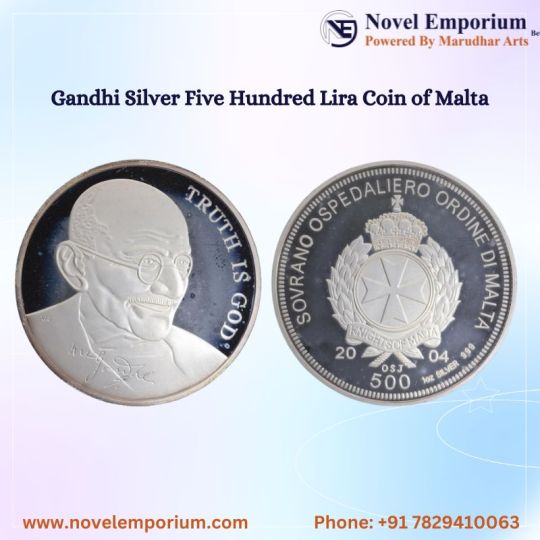
Collecting old items can be a fascinating hobby that allows individuals to connect with the past, preserve time, and value the skill of previous ages in collecting ancient objects. Whether for personal enjoyment or investment purposes, the world of old collectibles offers a diverse range of items to explore and appreciate.
#Gandhi Collections#vintage products online india#Indian Sultanate Coins#Antique coins#Old British Coins#Ancient India Coins#Mahatma Gandhi Coins#Republic India coins#British India currency notes#Banknotes of India#Autographs of India#World Wide Stamps Collection#Medals of India
0 notes
Text
In this world, everything is going on online because the biggest reason is technology changed. If you can find genuine Republic Indian Coins and British India Coins, it’s not an easy task to find out actual coins in this world. The one and only reason is there are so many websites there if you can find one maybe you can be lost your money. But I suggest if you are interested to buy and sell coins and notes then you are in the perfect place to buy or sell your genuine product here only on novelemporium. Because the one and the only reason is MarudharaArts has certified all coins for Novelemporium. If you are interested to buy or sell your coin or notes at Novelemporium then you are in the right place. For need more information you can directly consult with us at +9188672029800 or you can visit our authenticate website at www.novelemporium.com
#Bank Notes of British India Period#Proof coins for sale in india#Republic India coins#Coins of Bombay Presidencies#british india coins#british indian currency notes for sale#coins of republic india#FDC and Covers of World Wide#Independent Kingdoms of India Coins#Stamps Booklet of Worldwide#Stamps of Indian Convention States#Stamps of specimen#Tokens of India#ancient indian coins#novelemporium
0 notes
Text
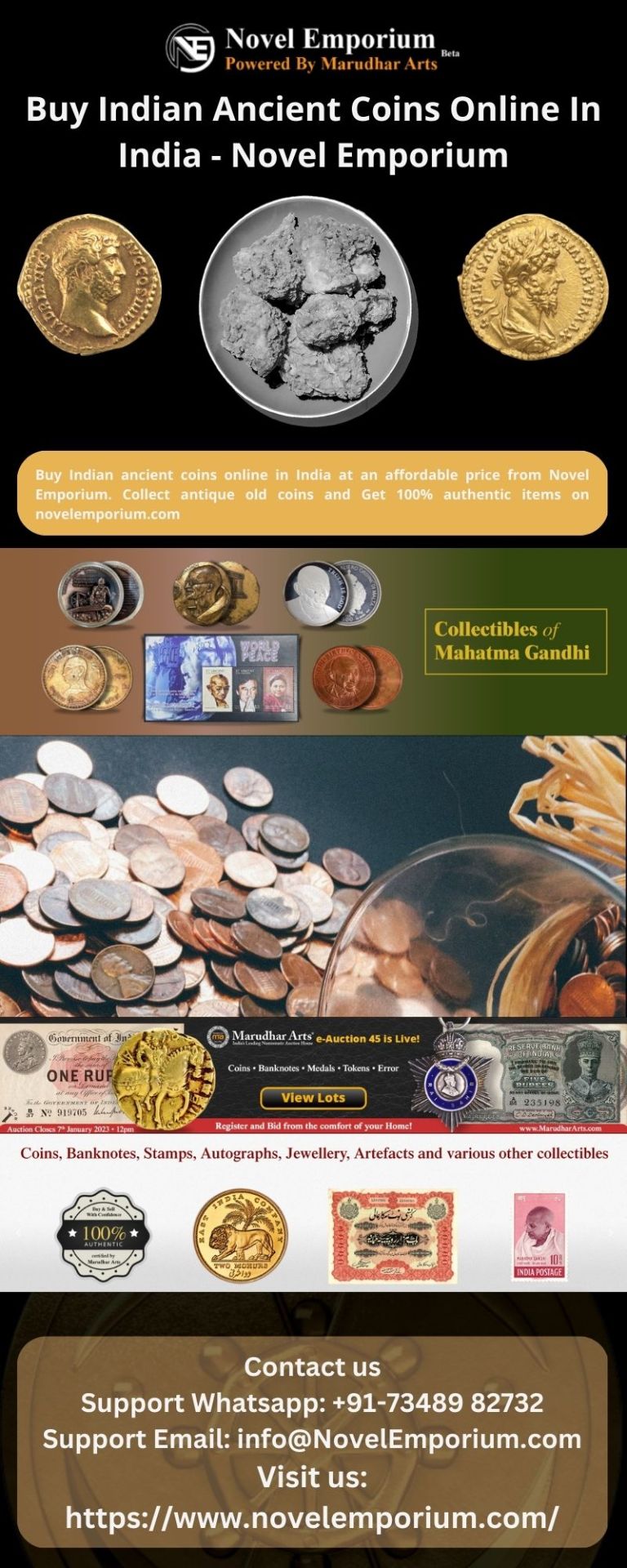
#ancient coins online#buy Indian ancient coins online#ancient India coins#buy and sell ancient India coins#online marketplace to buy and sell coins#buy coins#buy stamps#buy notes
0 notes
Text







The Swamp Thing (2021) #1
#even though there’s more to be revealed I’m revisiting issue 1 with the new information revealed in issue 7 in mind#noting here that Prescott is into Levi from the very beginning#so they must have discovered that Levi became the Swamp Thing while he was still in India#also that Levi’s brother Jacob ‘makes a dark bargain’#but that’s presumably- directly at least- not what turned Levi into the Swamp Thing#as Jacob referenced later suggesting that he’s responsible for the sickness that’s infecting the green#particularly that’s solely focused on the negative things that humans have done and can’t see the positive#leading to people being infected by bad ideas#so I wonder if he’ll be framed as an extremist and Levi as more responsible/a bridge between humanity and nature#hmm#I think there’s been a lot of emphasis though on how Levi has been irrevocably changed#which is due to him now accepting his father’s teachings#but also due to him now experiencing the world in an incredibly unique way as the Swamp Thing#so he’s not really a ‘human’ perspective so much as a now ancient one#which I guess could be contrasting to human shortsightedness#also it stands out to me that Levi has gone through this traumatic and incredible thing#and then is just sort of attempting to live life as normal#which of course doesn’t work out because he keeps unintentionally transforming into the Swamp Thing#again I like how this series is approaching character development#by withholding information from the reader that the character won’t confront/acknowledge#until they do#the reader knows less than the character but it works because what we are shown is compelling and intriguing enough to mantain interest#dc#the swamp thing#levi kamei#my posts#comic panels
0 notes
Text
In addition to my Monkey Man post from earlier, the always kind & sweet Aparna Verma (author of The Phoenix King, check it out) asked that I do a thread on Hijras, & more of the history around them, South Asia, mythology (because that's my thing), & the positive inclusion of them in Monkey Man which I brought up in my gushing review.
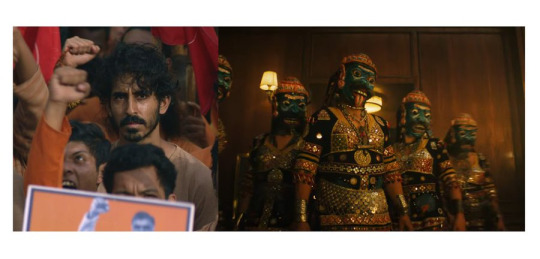
Hijra: They are the transgender, eunuch, or intersex people in India who are officially recognized as the third sex throughout most countries in the Indian subcontinent. The trans community and history in India goes back a long way as being documented and officially recognized - far back as 12th century under the Delhi Sultanate in government records, and further back in our stories in Hinduism. The word itself is a Hindi word that's been roughly translated into English as "eunuch" commonly but it's not exactly accurate.
Hijras have been considered the third sex back in our ancient stories, and by 2014 got official recognition to identify as the third gender (neither male or female) legally. Pakistan, Nepal, Bangladesh, and India have accepted: eunuch, trans, intersex people & granted them the proper identification options on passports and other government official documents.
But let's get into some of the history surrounding the Hijra community (which for the longest time has been nomadic, and a part of India's long, rich, and sometimes, sadly, troubled history of nomadic tribes/people who have suffered a lot over the ages. Hijras and intersex people are mentioned as far back as in the Kama Sutra, as well as in the early writings of Manu Smriti in the 1st century CE (Common Era), specifically said that a third sex can exist if possessing equal male and female seed.
This concept of balancing male/female energies, seed, and halves is seen in two places in South Asian mythos/culture and connected to the Hijra history.
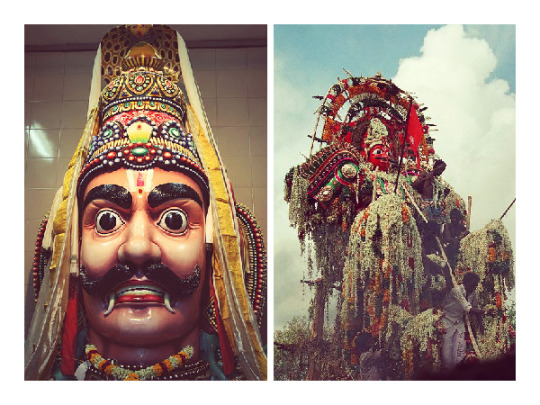
First, we have Aravan/Iravan (romanized) - who is also the patron deity of the transgender community. He is most commonly seen as a minor/village deity and is depicted in the Indian epic Mahabharata. Aravan is portrayed as having a heroic in the story and his self-sacrifice to the goddess Kali earns him a boon.

He requests to be married before his death. But because he is doomed to die so shortly after marriage, no one wants to marry him.
No one except Krishna, who adopts his female form Mohini (one of the legendary temptresses in mythology I've written about before) and marries him. It is through this union of male, and male presenting as female in the female form of Mohini that the seed of the Hijras is said to begun, and why the transgender community often worships Aravan and, another name for the community is Aravani - of/from Aravan.
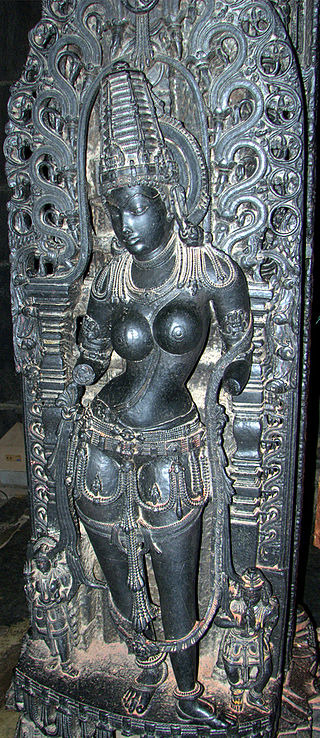
But that's not the only place where a gender non conforming divine representation can be seen. Ardhanarishvara is the half female form of lord Shiva, the destroyer god.
Shiva combines with his consort Parvarti and creates a form that represents the balancing/union between male/female energies and physically as a perfectly split down the middle half-male half-female being. This duality in nature has long been part of South Asian culture, spiritual and philosophical beliefs, and it must be noted the sexuality/gender has often been displayed as fluid in South Asian epics and the stories. It's nothing new.

Many celestial or cosmic level beings have expressed this, and defied modern western limiting beliefs on the ideas of these themes/possibilities/forms of existence.
Ardhanarishvara signifies "totality that lies beyond duality", "bi-unity of male and female in God" and "the bisexuality and therefore the non-duality" of the Supreme Being.
Back to the Hijra community.
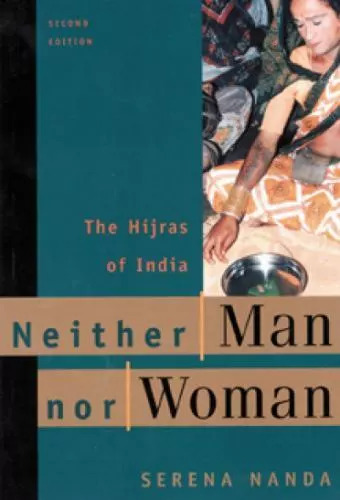
They have a complex and long history. Throughout time, and as commented on in the movie, Monkey Man, the Hijra community has faced ostracization, but also been incorporated into mainstream society there. During the time of the Dehli Sultanate and then later the Mughal Empire, Hijras actually served in the military and as military commanders in some records, they were also servants for wealthy households, manual laborers, political guardians, and it was seen as wise to put women under the protection of Hijras -- they often specifically served as the bodyguards and overseers of harems. A princess might be appointed a Hijra warrior to guard her.

But by the time of British colonialism, anti-Hijra laws began to come in place folded into laws against the many nomadic tribes of India (also shown in part in Monkey Man with Kid (portrayed by Dev Patel) and his family, who are possibly
one of those nomadic tribes that participated in early theater - sadly by caste often treated horribly and relegated to only the performing arts to make money (this is a guess based on the village play they were performing as no other details were given about his family).
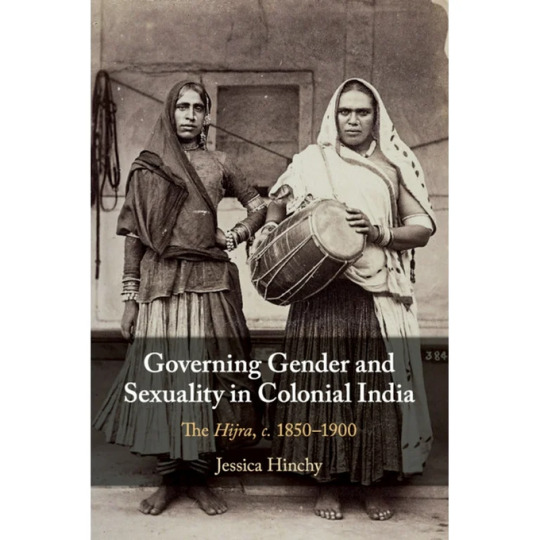
Hijras were criminalized in 1861 by the Indian Penal Code enforced by the British and were labeled specifically as "The Hijra Problem" -- leading to an anti-Hijra campaign across the subcontinent with following laws being enacted: punishing the practices of the Hijra community, and outlawing castration (something many Hijra did to themselves). Though, it should be noted many of the laws were rarely enforced by local Indian officials/officers. But, the British made a point to further the laws against them by later adding the Criminal Tribes Act in 1871, which targeted the Hijra community along with the other nomadic Indian tribes - it subjected them to registration, tracking/monitoring, stripping them of children, and their ability to sequester themselves in their nomadic lifestyle away from the British Colonial Rule.
Today, things have changed and Hijras are being seen once again in a more positive light (though not always and this is something Monkey Man balances by what's happened to the community in a few scenes, and the heroic return/scene with Dev and his warriors). All-hijra communities exist and sort of mirror the western concept of "found families" where they are safe haven/welcoming place trans folks and those identifying as intersex.
These communities also have their own secret language known as Hijra Farsi, which is loosely based on Hindi, but consists of a unique vocabulary of at least 1,000 words.
As noted above, in 2014, the trans community received more legal rights.
Specifically: In April 2014, Justice K. S. Radhakrishnan declared transgender to be the third gender in Indian law in National Legal Services Authority v. Union of India.
Hijras, Eunuchs, apart from binary gender, be treated as "third gender" for the purpose of safeguarding their rights under Part III of our Constitution and the laws made by the Parliament and the State Legislature. Transgender persons' right to decide their self-identified gender is also upheld and the Centre and State Governments are directed to grant legal recognition of their gender identity such as male, female or as third gender.
I've included some screenshots of (some, not all, and certainly not the only/definitive reads) books people can check out about SOME of the history. Not all again. This goes back ages and even our celestial beings/creatures have/do display gender non conforming ways.
There are also films that touch on Hijra history and life. But in regards to Monkey Man, which is what started this thread particularly and being asked to comment - it is a film that positively portrayed India's third sex and normalized it in its depiction. Kid the protagonist encounters a found family of Hijras at one point in the story (no spoilers for plot) and his interactions/acceptance, living with them is just normal. There's no explaining, justifying, anything to/for the audience. It simply is. And, it's a beautiful arc of the story of Kid finding himself in their care/company.
#hijra#trans representation#monkey man#dev patel#transgender#trans rights#trans rights are human rights#third sex#indian history#indian culture#colonialism#imperialism#south Asian mythos#South Asian myths#Aravan#Iravan#Mahabharata#hindu mythology#hindu gods#kali goddess#krishna#hindu mythology art#Ardhanarishvara#Shiva#Parvarti#sexuality#gender fluid#fluid sexuality#trans community#transgender rights
213 notes
·
View notes
Text
Quick note : Hindus did not demolish the Babri masjid. We deconstructed it. There's a difference in there. The report of KK Mohammad Sir and he himself in multiple interviews say that he stands with the OGness of Rama Lalaa on his birthplace. The mosque very much did have temple remains and the appearance of Rama Lalaa in there wasn't a right-wing move. The supreme court of India has anyway given land for the mosque at some distance from the janmabhoomi so it's a win-win for both the communities now ig. All the butthurt people crying over the deconstruction should also note that Rama Lalaa isn't some non-violence icon of our religion so kindly shut up. Saying that - "He wouldn't have wanted the temple because a mosque stood there once and y'all broke it" is plain stupidity because he himself said - "Janani janmabhoomishcha swargaadapi gariyasi." Both his mother and his motherland are more dear to him than any heaven. Shri Rama did hold up weapons in the favour of what is right when fighting numerous demons and proceeded to threaten the ocean into drying it lest it doesn't heed to him, after a three day penance. The prev governments here were very minority appeasing. One of them even got as far as to saying Shri Rama was fictional when we have plenty evidences of him being a venerated ancestor of ours. All of them fell on their fours when Rama Lalaa won his case in the supreme court. They don't give a shit about the majority sentiments here being oppressed (Hindus have a history of being oppressed even when we're in majority, in our homeland. Are we debating on that now? Oml). Babar should not have done what he did, so yeah like Hindus were just taking back what is rightfully ours. (For the sake of secularism and brotherhood, shouldn't they be understanding our sentiments as well? It has to go both ways, no?) We have been waiting for around 500 years for our god to come back to a palace from a tent and the pseudo-liberal meltdowns are personally very enjoyable to me. You should prolly save those tears for Mathura and Kashi case too. Ram mandir kisi ke baap ke paison se bana nahi hai. Hindus contributed to it. Temple towns were a thing in ancient India, still many of them exist in the south because the north has suffered voraciously due to invasions, never forget. No tax money has been used in the construction of the Rama temple. Hope that helps.
#hindublr#ramablr#i love seeing the left having meltdowns lmao#cry all you want#par mandir toh vahi bana hai 😊
89 notes
·
View notes
Text
Atmakaraka Series - Part 5
Atmakaraka is the planet with the highest degree in the birth chart.
Short note : atmakaraka can give good or bad results depending on the strength of the atmakaraka planet.
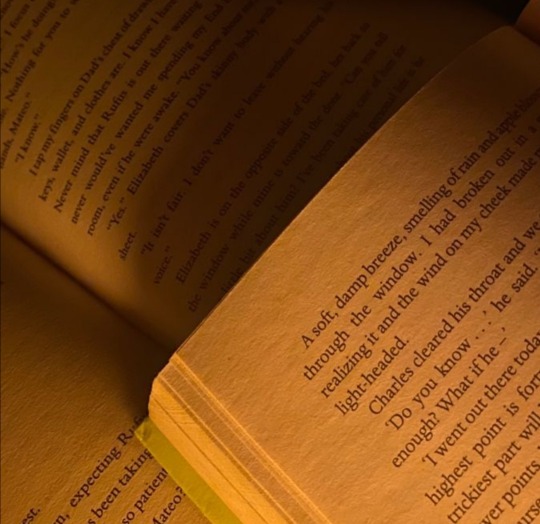


Atmakaraka in 5th house:-
The person needs to take care of children, it can be their own or somebody else's. You will also be forced to learn things that go against your beliefs.
Sun atmakaraka in 5th house - you can get really lucky during your sun mahadasha. For you, education is very important and you guys will probably do a PhD, or just a lot of diploma courses, you could also be more interested in dual degree programmes. If sun is making a conjunction with jupiter then you can be really good at speculative business. If it's with saturn, then refrain from engaging in such things. You are probably interested in learning ancient texts, especially the religious people, you will learn the language in which the texts were originally written so that you can understand them even better. If you have this placement in libra, leo or scorpio then you guys can be really good actors, if you're interested in acting, then I would suggest you to go for it.
Moon atmakaraka in 5th house - you guys are pretty criers, that's a fact. I have also noticed this placement in a lot of actors who are really good at portraying mental disorders on screen, especially, personality and eating disorders and schizophrenia. But if moon is weak, then you shouldn't do roles like these, because a lot of these actors went into depression because they played their characters "too well". I feel like even if you don't want to have children, you will end up doing a job that requires you to interact with kids. Kids really like you too, you maybe the kind of person who can very easily put kids to sleep, this is because they feel safe with you. This is also a stay-at-home parent placement. I know a woman with this placement, and she genuinely likes taking care of her kids, this is what she wanted to do, and she's happy with her life.
Mercury atmakaraka in 5th house - you are someone who likes to invest in education. I know a girl with this placement and her parents wanted to marry her off after she completed her schooling but she left her house, started earning money on her own and then went to college. I personally think that this is a REALLY REALLY good placement to have if you live in India or in a country where parents give more preference to a girl's marriage then her education, because it gives you the courage to fight for your education. You could be a very skilled performer, and have the ability to charm an audience. You guys are probably sapiosexuals. I know someone with this and one day a guy approached her and was talking to her and then he just suddenly says "she's probably loose" and majority of the women would get offended by this statement because it's misogynistic but she was more disgusted by the fact that he was stupid enough to think that a vagina could be loose, she is a medical student and so she basically gave him a 2 hour lecture explaining the structure of the vagina and how it works, it was.... funny...and sad.
Venus atmakaraka in 5th house - you are so lucky if you have this placement (if not aspected by saturn) you are literally supposed to have fun in this life. You can be good at all things that require creativity; painting, acting, singing, directing, etc. This is also an indicator of your first child being a girl, she would be very beautiful, and even if it's a boy, he would be more pretty than handsome. If venus is also the 7th Lord, then your spouse can be really good looking as well. But if venus is weak, then you can be superficial, and can also have the tendency to go for himbos/bimbos. I don't really have a lot to say about this placement, I mean.. Just have fun guys, do whatever makes you happy.
Mars atmakaraka in 5th house - you guys would be the type of parents who want their kids to excel in every single sport. You can have be good at technical things, like technology, engineering, mathematics, computer science and stuff. With this placement, conjunctions matter a lot, I know a girl with this who has her Mars AK in 5th conjunct venus and she's a ballet dancer, which requires streghth and creativity. I also know another girl with Mars AK in 5th conjunct Mercury and she's a lawyer and a pretty good one at that. You are more likely to pursue technical education if Mars is alone. You will be the parent who wins all the parent marathon and dance competitions. The type of parent to bully their kid's bully, and act oblivious afterwards.
Jupiter atmakaraka in 5th house - you will be blessed with all the things that 5th house represents, this placement also indicates having A LOT of kids (if jupiter isn't retrograde) they can be biological or adopted, doesn't matter. I have noticed that most of the time your parents are the ones who motivate you to study and encourage you to go to college and pursue higher education. You will also have to travel for higher education, it can be outside of your state, country, or continent. If you decide to have a child, then they will make you feel very happy and you can start earning more money after the birth of your first child, you will also be able to start your own business.
Saturn atmakaraka in 5th house - there can be a delay in childbirth and education. It can take you longer than others to complete your education. You are also someone who doesn't know how to enjoy, you can be very awkward in social situations. I have noticed that a lot of people with this, are those class monitors who are like, "if I see you talking again, then I will write your name on the board", this can also be one of the reasons why your classmates don't like you very much. This placement is easier to deal with if saturn is in conjunction with venus or Mercury, as this can make people see you as someone who is disciplined but also knows when to let loose.
(all pictures are taken from Pinterest)

© martian-astro All rights reserved, 2024
#vedic astrology#vedic observations#astrology observations#astroblr#atmakaraka#sun atmakaraka#moon atmakaraka#mercury atmakaraka#venus atmakaraka#mars atmakaraka#jupiter atmakaraka#Saturn atmakaraka#astrology#astro community#astrology community#vedic chart#astro observations
85 notes
·
View notes
Text
Fairy Scents ft. Kiane Kids Scent Headcanons
It's well established that each fairy has a scent that is associated with a flower or a herb. So far we have confirmed scents for each notable fairy we have been introduced to.
So after some quick research I found some info about these flowers and their scents
King - Gold Osmanthus
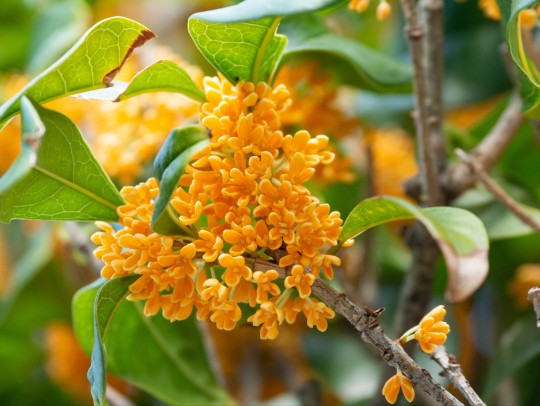
Osmanthus Wine tastes same as I remember, but where are those who share the memory XD
Origins: China
In the language of flowers, they carry the meaning of love and romance, symbolising true love and faithfulness
Smells like a mix of juicy peaches, ripe apricots with soft leather or suede.
Elaine - Lavender
Origins: Mediterranean
Represent purity, silence, devotion, serenity, grace, and calmness.
Biblical meaning of lavender symbolizes purity, devotion, and love
Delicate, sweet smell that is floral, herbal, and evergreen woodsy at the same time
Helbram - White Rose
Origins: Ancient Greece
Symbolize loyalty, purity, and innocence.
Combination of floral and fruity notes, with hints of honey and jasmine
Fun fact: A White Rose is what King used to kill Helbram (the first time) it turned red because of the blood
Gerheade - Mint
Origins: Mediterranean
Symbol of Hospitality and Wisdom
Gloxinia - Ginger
Origins: Maritime Southeast Asia
In many cultures, ginger is considered a symbol of love
Used in religious rituals to symbolize cleansing, protection and blessing.
Warm and spicy, with a hint of sweetness
Lancelot - Lemon
Origins: Unknown (said to be first grown in Northeast India, Northern Myanmar, or China)
Symbol of purity and cleansing
Headcanon Time
Since Nakaba hasn't spoken out about their scents I'll give my thoughts on the matter.
Lancelot introduced fruits into the mix of scents and Gloxinia smells like Ginger which is a root so I went ham with this.
Nasiens - Oleander or Sunflower

Oleander are toxic which is very fitting for our Mad Herbalist
Smells like Vanilla
Oleander symbolizes love, beauty, and resilience
I want one of Kiane's kids to smell like Sunflowers cause you know... Sunflower
Sunflowers also don't have a distinct smell so it's actually fitting for Nasiens since he grew up thinking he's human so there's really no natural fairy-like smell he could have detected from himself
Sunflower represents longevity, lasting happiness, adoration, and loyalty
Sixtus - Peach
Since Sixtus looks extremely like King I think it's only fitting if his scent is close to King's as well
Peaches symbolizes longevity
Belte - Jasmine
Belte gives Helbram energy and he kinda looks like him too so his scent also needs to give Helbram energy
Jasmine stands for purity, simplicity, modesty and strength.
Zana and Zillian - Blackberry and Raspberry
Since they're twins I want their scents to match
Blackberries are mild, sweet and slightly acidic scent, with earthy and woody nuances.
Some believed that blackberries contain properties of abundance and prosperity
Raspberries are fruity, sweet and slightly acidic
Raspberries are symbol of kindness in Christian art.
Tioreh - Pink Hyacinth
Phao - Lily of the Valley
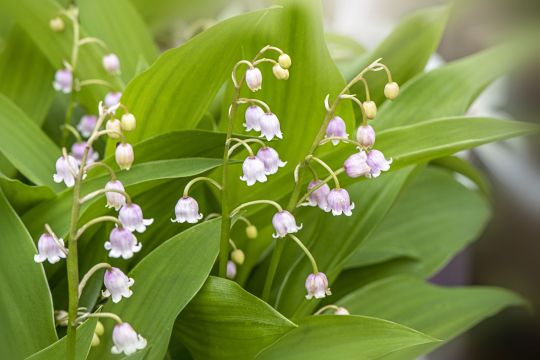
Symbol of purity, joy, love, sincerity, happiness and luck,
Has a floral and green scent, with fresh and slightly sweet notes
I want one of Kiane's kids scents to come from the earth, something underground. There's an underground Orchid but it smells bad so that won't do so I specifically looked for a flower that has an earthy scent. I also want it to be PINK for Tioreh
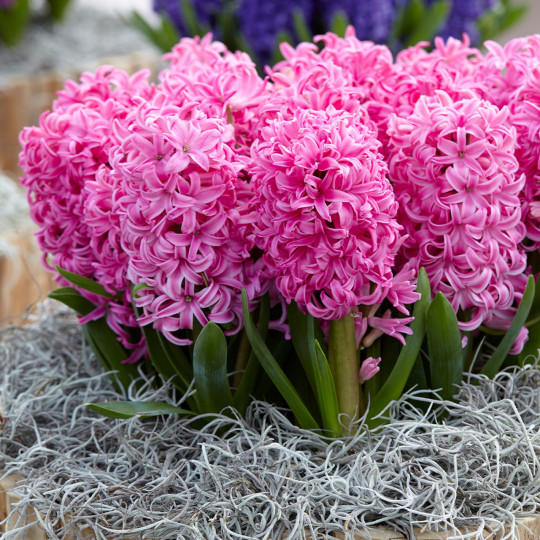
Sweet, robust, and earthy
Pink hyacinths symbolize playful joy.
#fairy scents#fairy clan#nnt king#fairy king harlequin#king harlequin#nnt elaine#Lancelot#Gloxinia#gerheade#helbram#Nasiens#Sixtus#Zana#Zillian#Belte#Phao#Tioreh#nanatsu no taizai#four knights of the apocalypse#seven deadly sins#4kota#nnt#mokushiroku no yonkishi#seven deadly sins sequel#nanatsu no taizai mokushiroku no yonkishi
43 notes
·
View notes
Note
Colonialism is a disease
Imagine being an Arab Muslim and having the audacity to call someone else a colonizer. The illustration below is a snapshot of Islamic colonialism and occupation of other people's lands, from the 7th-9th centuries. Islam went on to attack, destroy, occupy and colonize vast swaths of Europe and southeast Asia, as well as what is now called Turkey.
The world has witnessed many colonial empires since the beginning of time. Most notably, the Mongols, Persians, Greeks, Romans, Babylonians, Egyptians, Islam/Ottomans, Portuguese, Dutch, French, Spanish, British, and American. The only empire that didn't take land, even after winning world wars, were the Americans. They actually gave back the Philippines. But I digress.

All of these empires were in large part, created by bloody conquest, and built on the backs of the newly subjugated. The Hebrews were, famously, slaves in Egypt.
No one seems to teach this in the west, focusing more on the Romans, but of all the colonialists, one of the most deadly brutal and expansionist empires were the Muslims aka the Islamists. The Islamic empire expanded by sheer, from Medina (where Muhammad massacred and enslaved the 50% majority Jewish population) all the way into western North Africa, much of Europe, and large populations of Southeast Asia (Indonesia, Malaysia, parts of India now called Pakistan, etc).
As it expanded using violence and fear, Islam literally took 100 million slaves out of Africa, and was responsible for one of the greatest mass murders in history: killing 10 million (or more) on the forced march from their homelands to the Middle East.
Some examples of Islamic slavery include the Al-Andalus slave trade, the Trans-Saharan slave trade, the Indian Ocean slave trade, the Comoros slave trade, the Zanzibar slave trade, the Red Sea slave trade, the Barbary slave trade, the Ottoman slave trade, the Black Sea slave trade, the Bukhara (Uzbekistan) slave trade, and the Khivan slave trade from which Islam took millions of slaves out of Persia to the Islamic khanates. There are Arab/Islamic societies today (Libya, a well-known example) that still trade slaves.
Compare this to Israel. Israel/Judea was never colonial nor expansionist. The Hebrews (aka Jews) were often properties of and were subjugated by, colonial empires, including the Islamic colonial empire.
They Hebrews themselves, as noted above, were most famously slaves of the the colonial Egyptian empire, some 4,000 years ago, before being murdered and subjugated by Islam starting in the 7th century. Somehow able to escape Egyptian tyranny through their own efforts (some say, by the grace of Hashem), the Hebrews settled in their current indigenous homeland 3.600 years ago - a small area by global standards, smaller than Belize, Albania, or Montenegro. They were happy there, and even at their peak, did not attempt to force convert others or expand much beyond their lands.
As historian Barbara Tuchman wrote, Israel is “the only nation in the world that is governing itself in the same territory, under the same name, and with the same religion and same language as it did 3,000 years ago.” Despite all the occupations and forced exiles, the Jews/Hebrews/Israelites have maintained a continuous presence in Judea/Israel/Samaria for some 3,600+ years. And even though Israel was granted modern statehood in 1948, it is one of the oldest continuously maintained countries in the world.
The 'modern' state of Israel came to fruition post WWII, in 1948; the redefinition of borders and modern statehood after the fall of the big colonials was in no way unusual to Israel. Many country's modern borders came to be defined in the post colonial period (post WWI & WWII). While Israel and Lebanon and Iraq and Iran and Syria and Egypt were all ancient civilizations, dating back thousands of years, modern statehood came in the 20th century: For example, statehood was granted to Egypt in 1922; Saudi Arabia and Iraq in 1932; Lebanon in 1943; Indonesia, South Korea & Vietnam in 1945; Syria & Jordan in 1946; India & Pakistan in 1947; Israel, & Myanmar in 1948; Laos, Libya & Bhutan in 1951; Cambodia in 1953; Morocco, Sudan & Tunisia in 1956; Ghana & Malaysia in 1957; and so on.
The problem is, the tribalism and supremacy of Islam, can't stand that it's once-conquered land is now in the hands of the original owners. Islam believes that once it puts a flag in the sand somewhere, it's theirs.
Oh, and by the way, Andalusia (Spain) is next in Islam's sights.
#islam#colonialism#colonialist#colonizers#israel#secular-jew#jewish#judaism#israeli#jerusalem#diaspora#secular jew#secularjew#Islamic jihad#jihad#Hamas#taliban#Isis#Iran#gaza#Samaria#judea#samaria#judea and samaria#jihadis#hamas#hamas war#iran war#islamists
36 notes
·
View notes
Text
Bank Notes of World Wide| British India Banknotes
The Novel Emporium is the best collections of Banknotes of world wide and British India Banknotes also known as currency notes or bills, are issued by central banks and used as a medium of exchange in various countries around the world.Each country typically has its own unique currency and banknotes that reflect its history, culture, and symbols. While it is not possible to list all the banknotes from every country in the world,United States Dollar,Euro ,British Pound Sterling,Japanese Yen,Australian Dollar,Polymer Bank Notes,Canadian Dollar ,Indian Rupee, Chinese Yuan,These are just a few examples, and there are many more currencies and banknotes worldwide.
Ancient British India Bank Notes,Ancient India Bank Notes,Polymer Bank Notes,Banknotes of India,Bank Notes Specimen,
If you want more details you can contact us, we will assist you Call: 8867029800
Email: [email protected]
Visit our website at www.novelemporium.com
The Novel Emporium is the best collections of Banknotes of world wide and British India Banknotes also known as currency notes or bills, are issued by central banks and used as a medium of exchange in various countries around the world.Each country typically has its own unique currency and banknotes that reflect its history, culture, and symbols. While it is not possible to list all the banknotes from every country in the world,United States Dollar,Euro ,British Pound Sterling,Japanese Yen,Australian Dollar,Polymer Bank Notes,Canadian Dollar ,Indian Rupee, Chinese Yuan,These are just a few examples, and there are many more currencies and banknotes worldwide.
Ancient British India Bank Notes,Ancient India Bank Notes,Polymer Bank Notes,Banknotes of India,Bank Notes Specimen,
If you want more details you can contact us, we will assist you Call: 8867029800
Email: [email protected]
Visit our website at www.novelemporium.com
#Ancient British India Bank Notes#Ancient India Bank Notes#Polymer Bank Notes#Banknotes of India#Bank Notes Specimen
0 notes
Text

Banknotes of India, commonly known as Indian rupees, are a significant part of the country's monetary system. These notes are issued by the Reserve Bank of India. The most common banknote is the 100-rupee note, featuring the portrait of Mahatma Gandhi, the father of the nation.
0 notes
Text
The Origin & Evolution of Correspondences in Witchcraft
This post was shared a week early over on my Patreon! Working a day-job and running a blog full-time is a ton of work, so any support is insanely appreciated! Patrons will receive early access to content, exclusive content such as research notes and book recommendations, free tarot readings, access to a private Discord channel within my server, discounted products from my Etsy store, free digital files, voting power on my content, and MUCH more! Check it out here for as little as $2/month.
If you’ve been a witch for a while, you’ve probably asked yourself: where do correspondences come from? Who decided that lavender was good for calming, or that obsidian was good for absorbing negative energy? Where does the concept of correspondences come from in the first place? To answer these questions, we must first look at something called “correlative thinking”: Marcel Granet (1884-1940), a French sociologist, coined the term “correlative thinking”, which can be defined as “thinking of an item of one class by correlating it with an item of another class”, typically organizing and relating “natural, political/social, and cosmological data in highly ordered arrays or systems of correspondence.” Sound familiar?
Correlative thinking takes many forms throughout religion, philosophy, and humanity – even showing up as early as Mesopotamia, where they believed events on earth ran parallel to events in heaven: “each city-state had its own patron god and every change in the balance of power between the city-states was seen as the direct reflection of a change in the relationship of the gods.” (Cavendish, pg. 12) In ancient Greece and among Hellenic philosophers, they came up with the “macrocosm/microcosm” analogy, which describes the relationship between the smaller, human being (the microcosm) with the much bigger, seemingly infinite cosmos (the macrocosm).
This correlative thinking is prevalent in many magical texts throughout the years – including The Emerald Tablet (late 8th-early 9th century), The Picatrix (a 9th century Arabic grimoire), The Key of Solomon (1312), and the Three Books of Occult Philosophy (1533). After the publication of The Three Books of Occult Philosophy and the boom of new-age spiritualism in the 1970s, there have been a massive number of publications related to witchcraft, correspondences, ritual magic, and more. For the purpose of this post, however, we’ll be focusing on these foundational texts to better understand the evolution and origin of correspondences.
The Emerald Tablet, dated around the late 8th-early 9th century, is one of the most highly influential texts within the philosophical and occult realm. An English translation of a line of text within The Emerald Tablet provides one of the most popular terms among new agers and modern pagans: “That which is above is like to that which is below, and that which is below is like to that which is above”. A shortened version of this phrase, “as above, so below”, can be found in Helena Blavatsky’s work, Isis Unveiled (1877), where it became massively popularized among the modern pagan community. This phrase, along with terms related to correlative thinking, tie back to many cultures – including China, India, and more.
The Picatrix, 9th-century Arabic grimoire on astrological magic, is yet another influential piece of text. This text contained astrological magic, magical potions and spells, and different Hermetic, Neoplatonic, and Aristotelianism philosophical passages – and it also included the explanations of links between planets and intangible objects such as colors and perfumes/fragrances.
After a few series of translations in the 12th and 13th centuries, the information within the Picatrix (and other sources) were recorded and arranged by Henry Cornelius Agrippa (1486-1535) in his work, Three Books of Occult Philosophy in 1509 (not being published until 1533). From there, Dr. John Dee (1527-1604) expanded on Agrippa’s work in the 1580s and 1590s.
Shortly after, in 1620, the Magical Calendar was published, which compressed much of the previous material. This calendar, amazingly recorded on one page, “contains tables of correspondences arranged by number, from one to twelve. The material is based largely on the extensive tables in Agrippa, book II, but goes beyond this, especially in its inclusion of sigils.” (Skinner, pg. 14)
Moving onto another incredibly influential text, The Signature of All Things, published by Jakob Bohme in 1764, covers a similar concept to correlative thinking known as ‘the doctrine of signatures’: God created everything on Earth with a “signature”, or sign, that tells you what that object’s purpose is. The idea is that any plant, herb, or object on earth should resemble what it’s purpose is – for example, walnuts (which look like brains) are used for brain health, and tomatoes (which are red, plump, and contain ventricles like the human heart) are used for heart health. Obviously, this concept was adopted in the context of medicinal use – by looking up an object’s signature within this book, a physician could theoretically find treatments for specific illnesses. While the contents of this book (and similar texts) have been debunked as pseudoscience, the influence of the doctrine of signatures is prevalent in witchcraft correspondences today.
In 1888, the Hermetic Order of the Golden Dawn was founded, and during that time S L MacGregor Mathers (1954-1918) and Dr. Wynn Wescott (1845-1925) prepared knowledge lectures for the Order, which eventually led to the generation of a Book of Correspondences (unpublished). According to Adam McLean in his edition of The Magical Calendar, this book circulated among members of the inner order of the Hermetic Order of the Golden Dawn, and was later published by Aleister Crowley as his own work, Liber 777 (1909). Meanwhile, in 1908, The Kybalion (an anonymously written text, though often attributed to William W. Atkinson [1862-1932]) was published, including topics like “The Principle of Correspondence” and “The Planes of Correspondence”.
From here on, we have an uproar in magical texts, thanks to the new-age/spiritualism movement of the 70s and 80s – popular authors like Gerald Gardner, Scott Cunningham, Ray Buckland, and many others published works on the subject of magic, often including their own correspondences, typically influenced or inspired by the works of Crowley, Mathers, and Atkinson. Of course, the contents of these modern texts are what is most recognizable to practitioners today – we usually find tables of information, relating astrological signs, herbs, planets, feelings, colors, and more to their “meanings”: protection, anti-stress, happiness, love, etc.
As it stands, correspondences are a by-product of the ‘correlative thinking’ concept we covered earlier – this correlative thinking shows up in Mesopotamia, and evolved throughout magical texts and grimoires, eventually becoming these “tables of magical correspondences” that we are familiar with seeing in modern witchcraft and pagan books and resources.
As I round off this post, I want to share a quote from Richard Cavendish in his book, The Black Arts: “Man is a tiny replica of the universe. If two things are naturally associated together in the human mind, which is an image of the ‘mind’ of the universe, this is evidence of a real connection between the two things in the universe. Many of the important magical analogies and connections are not natural to most people’s minds today, but have been handed down by tradition from the remote past. This enhances their value for occultists, who believe that humanity was a great deal wiser in these matters in the remote past than it is now.” As practitioners, particularly modern practitioners, I feel we put too much emphasis on older concepts and traditions. While there’s nothing necessarily wrong with sticking to traditions and building off of older magical systems, I think it’s just as important that we work on our own magical systems – what does the color red mean to you? What about the planet Jupiter? Find out what works for you – you may find that it makes you feel more connected to your craft and your practice, and your workings could become more powerful, too.

Sources/Further Reading:
Dictionary of Gnosis & Western Esotericism by Wouter Hanegraaff
Three Books of Occult Philosophy by Heinrich Cornelius Agrippa
The Signature of All Things by Jakob Bohme
The Black Arts by Richard Cavendish
A History of Magic, Witchcraft and the Occult by DK
The Complete Magician’s Tables by Stephen Skinner
Neurobiology, Layered Texts, and Correlative Cosmologies: A Cross-Cultural Framework for Premodern History by Farmer et al
https://youtu.be/p0z3MuuB9uc
https://youtu.be/gYSGSjU84vE
https://www.youtube.com/watch?v=gx1av438mLY
https://www.patheos.com/blogs/matauryn/2018/06/03/magickal-correspondences/
https://howardchoy.wordpress.com/tag/correlative-thinking/
https://www.researchgate.net/figure/An-abstract-diagram-meant-to-illustrate-the-perfectly-correlative-structure-of-the_fig4_237249544
https://swedenborg.com/emanuel-swedenborg/explore/correspondences/
#correspondences#thevirginwitch#witchcraft#witchcraft 101#witchcraft 102#witchcraft 201#witches#witches of tumblr#pagan#beginner witch#witch history#reading materials#witch#magic#grimoire#book of shadows#astrology#astrological magic#astrological#planetary magic
194 notes
·
View notes
Text
Intro to Tantric Shaivism
Shiva as a god is someone who has been deeply influential in my personal spiritual journey. From watching both Lord Ram and Ravana pray to him to seeing the relationship between Shiva and Shakthi, I was always intuitively fascinated by him and that led naturally to intellectual curiosity. In the previous write up I had summarised the meaning of Tantra, this is a small introduction to Shaivism.
Shaivism is the worship of Lord Shiva as the supreme being. It is an ancient Hindu sect that is an amalgamation of pre Vedic and Vedic traditions. As such, some scholars have dated the sect to the Indus Valley civilisation at 2500-2000 BCE.
Shaivism has many schools of thought, two of the most popular ones being: Saiva siddhanta and Kashmiri Shaivism from which we will draw most of the metaphysics, philosophy and cosmology from but first…
Who or what is Shiva?
The answer to this question itself could be a series all on its own but here’s two etymologies from two of the most ancient languages: Tamil and Sanskrit.
I was reading this incredible novel called Kottravai where the author describes the etymology of the word, Sivam, this is my very rough translation of the tamil text, “from the word meaning, life (Siivam), the people named their lord sivam”. From sivam comes siivan, more predominantly pronounced as jiivan meaning soul or living being.
Indeed, one of the most ancient names of the lord is pasu-pati, lord (pati) of animals (pasu). In Saiva Siddhanta, pasu is has a further meaning of soul so the lord of souls.
According to Monier-Williams, the Sanskrit word "Shiva" means "auspicious, propitious, gracious, benign, kind, benevolent, friendly". The root words of shiva in folk etymology are śī which means "in whom all things lie, pervasiveness" and va which means "embodiment of grace”.
While the Tamil etymology talks about who he is, the Sanskrit one gives a description of his characteristics.
But what is he?
He is sat-cit-ananda (being-consciousness-bliss). Or more succinctly, the universal consciousness. Kashmiri Shaivism talks about the universal consciousness as having two characteristics: prakasa (light) and vimarsa (reflective awareness) and talks about the universal consciousness as being the efficient cause whose effect is the vibration of consciousness (spanda). Here it should be noted that cause and effect are reciprocal processes where cause leads to effect and effect back to cause.
While we talk about Shiva as masculine, it is important to note that Shiva and Shakthi are a dual principle, like two sides of the same coin where Shakthi is the instrumental cause whose effect is pure energy (kundalini Shakthi). Symbolised in Ardhanadishwara.
Similarly, while Shaivism and vaishnavism are at odds with each other in many aspects, the old name for Visnu in the Tamil was Mayon, the personification of Maya (material reality, illusion) and Shaivite traditions agree that Maya is another aspect of Shakthi. The duality of Shiva and Vishnu is symbolised in Hari-Hara.
Proof of existence
Saiva siddhanta, a school popular in South India is a philosophical school that is based on theistic realism and therefore offers a rational argument for why the universal consciousness should exist. The proof first begins with 3 laws:
All existing things have arisen and must at some time be destroyed.
Law I, to the thesis that the world in its entirety must have been created at one point of time, and, again at one point of time, will in its entirety be destroyed; the world has a beginning and an end.
Everything that gets destroyed must arise again; something that exists cannot become a nothing.
Law 2, that the world's history will not end with its destruction, but that after a certain time it will be created anew out of itself; a new world-creation will follow a world- destruction.
Whatever arises must have existed before; a nothing can't turn into an existent something
Law 3, that an eternal living something must form the basis of this world, out of which it was created, and into which it will at some time be resolved, and from which it will at another time again be created.
But why Shiva?
Why is Shiva the personification of the universal consciousness? The answer given is quite simple.
There is a popular Tamil saying: ‘Anbe Sivam’ which means ‘love is Shiva’ or ‘shiva is love’. To quote from Saiva siddhanta: “You must worship what engages your love, you disciples of advaita.” Advaita means non-duality of subject and object and talks about the relationship between the individual soul and the divine. So from their perspective, anything that fuels your love is your personification of the divine and for Shaivites due to the history, culture and religion, Shiva is who engages their love and hence their devotion.
This is where the idea of Tantra comes into play. ‘The exploration of the inner cosmos is Tantra that helps one discover the inner architecture of one’s self and its relationship with the outer world.’ Tantric Shaivism is essentially the exploration and recognition of the soul and its relationship to Shiva, the personification of the universal consciousness.
Why use a personification?
the soul has three faculties: knowledge, will, action
it needs something to lean on, which it then imitates and assimilates
its faculties need to be set in motion by some impulse from outside.
When you love something, you desire to understand it, be with it and you immerse your thoughts in it. In other words, you develop devotion. This is what you lean on. The qualities of the personification of the universal consciousness as being auspicious, benevolent, full of grace enable the soul to be able to imitate it and assimilate with it. This love is fuelled by culture, mythology and other personal experiences unique to each individual so theology helps set in motion the faculties of the soul.
Knowledge - Knowledge can roughly be of two types: intellectual knowledge and instinctual knowledge. Instinctual knowledge is brought about by faith and the faith is strengthened through intellectual knowledge gathered from reading scripture, philosophy etc. Sometimes instinct can give rise to intellectual curiosity and other times intellectual exploration can give rise to a deity that is instinctually recognised by the soul.
Will - the will is simply the ability of a person to concentrate completely on the divine and is fuelled by devotion and resilience of one’s faith and this initiates action.
Action - action is the performance of inner (meditation, chanting mantras) and outer (puja, yoga) rituals acting as a symbolic union from which the actual union with the divine occurs
One of my main resources was the book Saiva Siddhanta: An Indian School of mystical thought in addition to other resources which I would be happy to link if anyone is curious.
48 notes
·
View notes
Quote
The strategies that this system has given us for being disconnected to our bodies are endless. Most people have one single voice/tone/note they use for everything. There is no difference between the way they sound when they are summoning a heart-connected lover, reading a book out loud, ordering food, speaking to a neighbor, talking to the police, asking customer service for help, or animating the erotic in lovemaking. I have at least 21 different flavors of voices as part of my vocal pantheon and sometimes I use them all in a given day. Some voices can be cleansing and detoxifying. Others can be energizing or relaxing. And special ones can be magical and healing. Our sound/vocal range is the thrust of being truly alive in the instruments of our bodies and meeting the depth of vulnerability and possibility. In the absence of voice, sound, breath, and spirit is a loss of great creative power and wisdom. There is something weakening about being alive but not having an ancient cultural resources of voices, sounds, and tones to invoke for different circumstances, needs, and purposes to help us decipher and discern this chaotic world more fully and generate new possibilities.
India Ame’ye Author
119 notes
·
View notes
Text
Revisiting the first look at the Viscountess for Season 3
Whilst we wait for the first official look at the Viscountess for Season 3 I am going to revisit a couple of the leaked photos we first saw in August 2022, and see what they could tell us about Kate's story.

Kate is not wearing a wedding ring:
The first thing to note is that Kate is not wearing a ring. I am aware that blogger Cassandra Morann (Rewatch Blog), and some others, have suggested one reason could be that it was Edwina's ring, however, I think this takes a very western view of how Kate would behave after marriage, and shows a lack of understanding of the character of Kate. If there was one thing we learned about Kate it was that her culture and heritage are an integral part of who she is, and I don't think this is something that will be forgotten going into Season 3.
In doing some research I discovered that rings are not necessarily an accessory married women from India would wear, and especially not in the early 19th Century, what I discovered is that bangles are a more significant piece of jewellery, both in the marriage ceremony and after the ceremony. We saw in Season 2 the significance of Kate's mother's bangles, and I believe that this is a tradition Kate will stay with, as such I believe that instead of wearing a ring Kate will symbolise her marriage in public with the wearing of bangles, and I think the picture of her hugging Colin shows this. We can see that Kate is wearing a thick, wide, gold bangle on her left wrist (I can't tell if she is also wearing one on her right wrist as well), I believe that this could potentially be a traditional bangle that she is wearing to symbolise her status as a married lady, and the bangle being gold symbolises fortune and prosperity.
Kate's Hair Adornment:
I have seen some suggestion from both Cat Quinn and Cassandra Morann that Kate has butterflies in her hair as a 'sweet nod' to Penelope being the lead for this season, however, I don't think this is correct. To me it also makes no sense, no female character wore anything as a 'sweet nod' to Kate being the lead in Season 2, nor did they for Daphne in Season 1, so why would any main female character wear something as a 'sweet nod' to the Season 3 lead? Especially when the characters in question never interacted in Season 2.
I believe that Kate is wearing adornments that invoke the idea of a Laurel Wreath in her hair, not to dissimilar to what the ancient Romans and Greeks wore. Whether the wreath is meant to represent the bay laurel leaf or the strawberry leaf is up for debate, however, I see this as the most likely hair adornment for Kate due to the symbolism.
The Strawberry Leaves could be a call to her position as Viscountess. Traditionally many in the peerage would wear coronets with representation of strawberry leaves for a coronation, and whilst this is not a coronation and technically a Viscount would not have Strawberry Leaves on his coronet, this could be a nod to that aspect of English tradition. However, I think it is more likely to be a representation of bay laurel leaves, something which I think has more symbolism for the character of Kate.
Wreaths were a sign of victory, and for Kate she has gained a victory of sorts in making her own decision and finally living her life for herself, but more interesting is the meaning behind the laurel. Laurel reminds us to reclaim our voice and our wisdom as we rebalance our lives, and this very much fits with Kate's arc. As we enter Season 3 of Bridgerton Kate is reclaiming her voice, and also she is working to rebalance her life away from her half sister and stepmother, and with her new family and role in life. Roman Emperors wore laurel wreaths in order to show their status and importance, for Kate this could be representative of her new status and importance within the Bridgeton family.
Whilst I believe that her hair adornment is most likely representative of a laurel wreath, there is one further possibility to consider, and that is that it is meant to represent the lotus flower - the traditional flower of India. This would be a further connection of Kate to her heritage, something that began in Season 2 with small nods to her Indian heritage, and it would be something that would be nice to see carried on for Season 3.
Is Kate presenting or being presented?
In the first photos seen of Kate in Season 3 we can clearly see that this is for Francesca's presentation at court, as we see Francesca dressed in a court dress with feathers. Kate is dressed in Gold and Cream, and there are two possibilities for this.
Kate is the one presenting Francesca, as Violet did with Daphne and Eloise. This would call back to Season 2 when Anthony told his mother that the woman he married would be responsible for launching his sisters into society, and as the presentation is the official 'launch' for a young lady this makes sense.
Kate is being presented as the Viscountess by Anthony. This could be a solid theory, though the reasoning I have seen for it is weak. This theory put forward by Cassandra Morann on her Rewatch Blog is reasoned due to the way that Anthony is dressed in his more formal Court Dress. However, in both Season 1 and Season 2 during the presentation scenes we did see some men dressed in more formal Court Dress (similar to what Anthony is wearing in the photo leaks), so using Anthony's dress as a basis for this theory presents a weak argument in my opinion.
Based on Violet's dress we would have to conclude that if Kate is being presented by Anthony, then Anthony is also presenting Francesca as Violet does not appear to be dressed for a presentation, as she was in Season 1 and Season 2. It is looking at Violet's dress that I believe the most likely scenario is the first, and Kate will be presenting Francesca. It is possible that Kate will have been formally presented either just before, or just after, their marriage, as presentations were not limited to the beginning of the Social Season.
Kate's overall look:
The first thing to notice is Kate's look is much softer than in Season 2. As these pictures are obviously for Francesca's presentation it is hard to know what her colour scheme will be for the rest of the season, however, the cream and the gold in these pictures add to her overall glow.
We won't know for certain about the details until Season 3 comes out, but my overall feel is that this first look really shows Kate as the Viscountess, and coming into her own. For Season 3 she will be happy and in love, and this look projects that to the viewers.
I cannot wait to see her overall look, and hope that they continue with this softer look for her as I think it really suits her.
#Bridgerton Season 3#Bridgerton#Viscountess Bridgerton#Kathani Bridgerton#Kate Bridgerton#Simone Ashley#Kanthony
82 notes
·
View notes